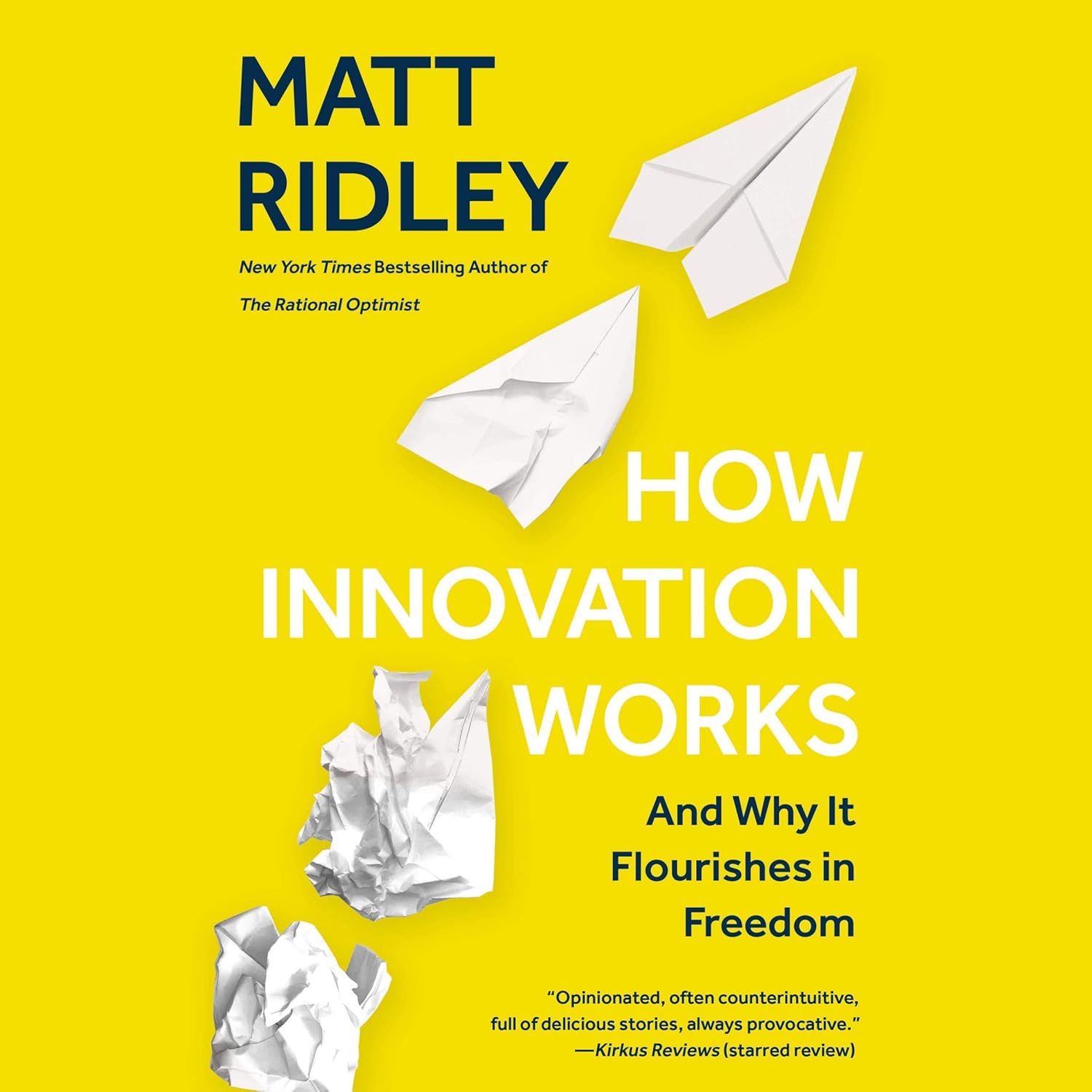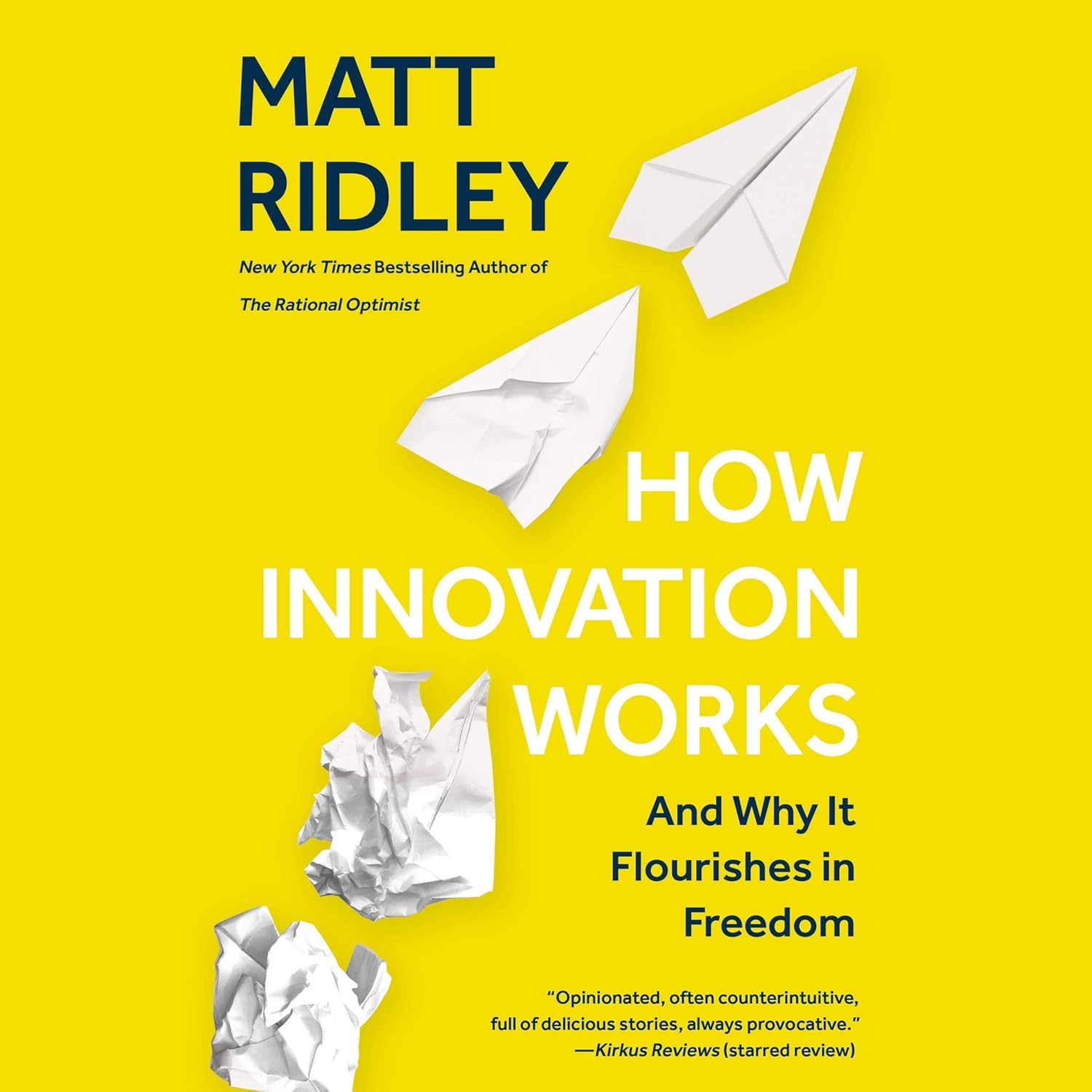As an avid reader with a keen interest in innovation and its impacts on society, I was drawn to Matt Ridley’s How Innovation Works: And Why It Flourishes in Freedom. I had previously enjoyed his other works, particularly The Rational Optimist, and was curious to see how he would expand on the theme of innovation. Ridley’s unique perspective on how innovation drives progress, coupled with a history of notable examples, promised to be both enlightening and engaging.
Ridley’s exploration is indeed compelling. He presents the argument that innovation is a bottom-up process, emphasizing that it emerges organically through collective human interaction rather than as a series of isolated inventions by brilliant individuals. This resonates well with Eric Grover’s review, where he highlights how Ridley effectively debunks the myth of the solitary genius, illustrating instead that many individuals contribute to significant breakthroughs over time. The rich historical anecdotes and vivid examples chronicled in the book illuminate how innovations—from steam engines to mobile phones—have enhanced our lives in ways we often take for granted.
Another aspect that stood out for me was Ridley’s assertion that freedom is critical for fostering innovation, a point echoed by several reviewers. Happy, for instance, touches on this theme, underscoring how the very act of exchanging ideas and experimenting can lead to remarkable advancements. Ridley argues that environments lacking freedom stifle innovation, a particularly poignant observation in today’s politically charged climate. His analysis of various socio-political systems offers important insights into how and why certain innovations thrive while others falter.
That said, the book is not without its drawbacks. At times, I found some of Ridley’s assertions lacking nuance. For instance, while his stance that concentrated government and corporate power can stifle innovation makes sense, I believe there are instances—like wartime efforts—where governments can indeed act as significant drivers of innovation, even under duress. Duncurin raises similar concerns, questioning Ridley’s dismissal of the role hardship can play in spurring creative solutions. Balancing a multifaceted view of innovation would have enriched the narrative even further.
Additionally, while Ridley’s discussions of historical innovation are fascinating, I felt there could have been more contemporary examples to bridge past theories with current trends like artificial intelligence and cryptocurrency. The book primarily focuses on a historical lens, which, while captivating, occasionally makes it feel less relevant to the rapidly evolving landscape of today’s technology and business environments.
Nonetheless, Ridley’s optimistic tone and the encouragement it brings cannot be overstated. The notion that innovation is the “child of freedom and the parent of prosperity” left me reflecting on the potential for growth within our societies and the transformative power of collaboration. His writing style is accessible and often witty, making complex ideas enjoyable to digest.
To summarize, How Innovation Works met my expectations for providing a comprehensive look at the nature and history of innovation. The extensive range of examples, engaging storytelling, and insightful commentary make it a surprisingly entertaining and thought-provoking read. While I would have appreciated more balanced discourse regarding state influence and contemporary relevance, Ridley’s ability to blend education with narrative is commendable.
In conclusion, I highly recommend this book to anyone interested in understanding the mechanics behind innovation. Whether you’re a policy maker, a businessperson, or simply someone curious about how we got to where we are today, Ridley offers valuable insights that can inspire and encourage. Overall, I would rate How Innovation Works 4.5 stars out of 5 for its informative and engaging exploration of a topic that profoundly shapes our world.








